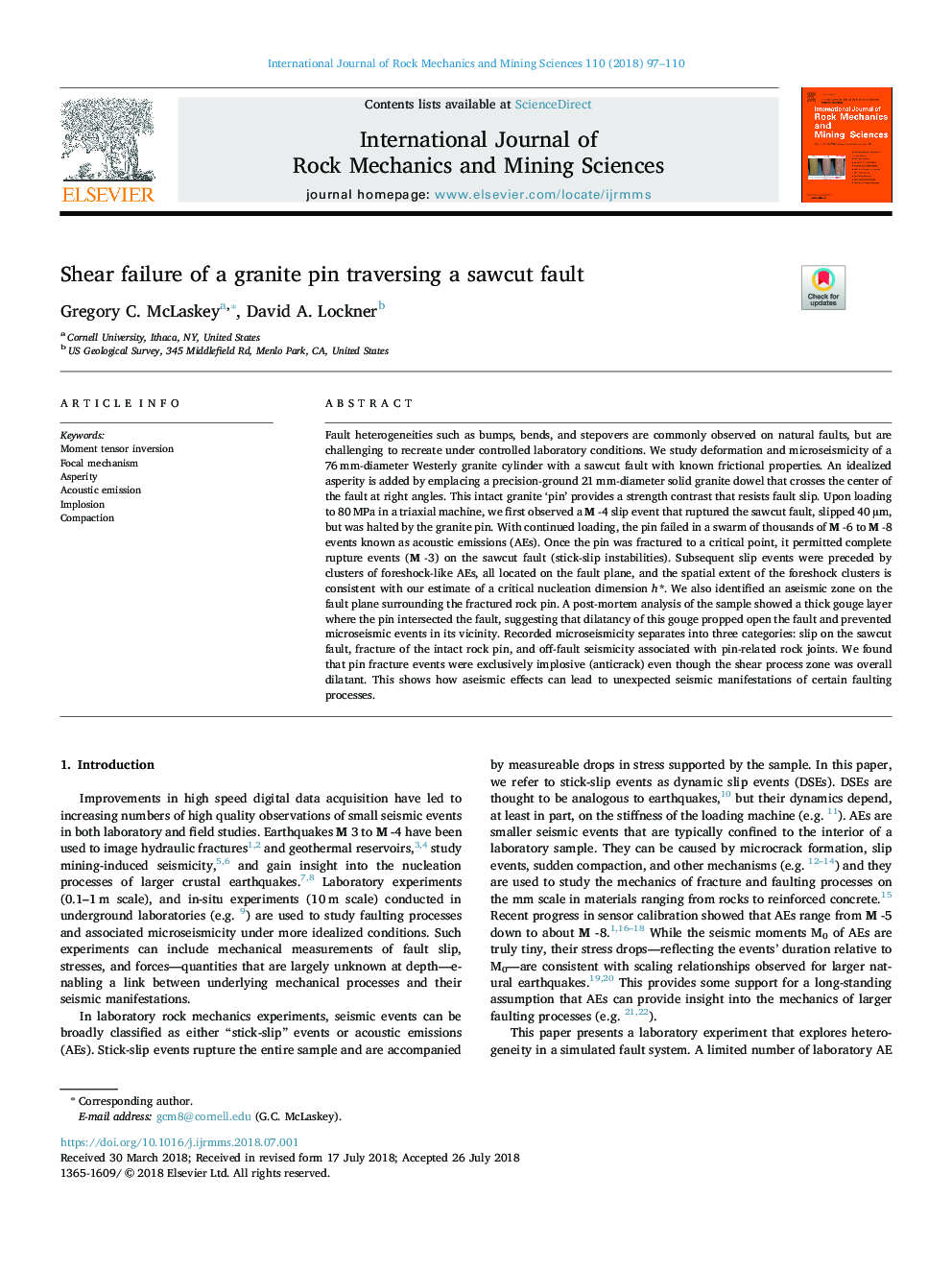| Article ID | Journal | Published Year | Pages | File Type |
|---|---|---|---|---|
| 7206078 | International Journal of Rock Mechanics and Mining Sciences | 2018 | 14 Pages |
Abstract
Fault heterogeneities such as bumps, bends, and stepovers are commonly observed on natural faults, but are challenging to recreate under controlled laboratory conditions. We study deformation and microseismicity of a 76â¯mm-diameter Westerly granite cylinder with a sawcut fault with known frictional properties. An idealized asperity is added by emplacing a precision-ground 21â¯mm-diameter solid granite dowel that crosses the center of the fault at right angles. This intact granite 'pin' provides a strength contrast that resists fault slip. Upon loading to 80â¯MPa in a triaxial machine, we first observed a M -4 slip event that ruptured the sawcut fault, slipped 40â¯Âµm, but was halted by the granite pin. With continued loading, the pin failed in a swarm of thousands of M -6 to M -8 events known as acoustic emissions (AEs). Once the pin was fractured to a critical point, it permitted complete rupture events (M -3) on the sawcut fault (stick-slip instabilities). Subsequent slip events were preceded by clusters of foreshock-like AEs, all located on the fault plane, and the spatial extent of the foreshock clusters is consistent with our estimate of a critical nucleation dimension h*. We also identified an aseismic zone on the fault plane surrounding the fractured rock pin. A post-mortem analysis of the sample showed a thick gouge layer where the pin intersected the fault, suggesting that dilatancy of this gouge propped open the fault and prevented microseismic events in its vicinity. Recorded microseismicity separates into three categories: slip on the sawcut fault, fracture of the intact rock pin, and off-fault seismicity associated with pin-related rock joints. We found that pin fracture events were exclusively implosive (anticrack) even though the shear process zone was overall dilatant. This shows how aseismic effects can lead to unexpected seismic manifestations of certain faulting processes.
Related Topics
Physical Sciences and Engineering
Earth and Planetary Sciences
Geotechnical Engineering and Engineering Geology
Authors
Gregory C. McLaskey, David A. Lockner,
